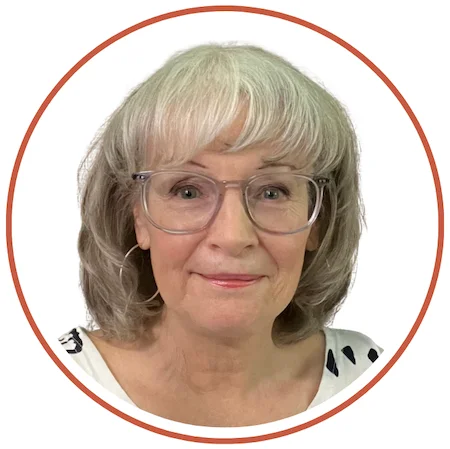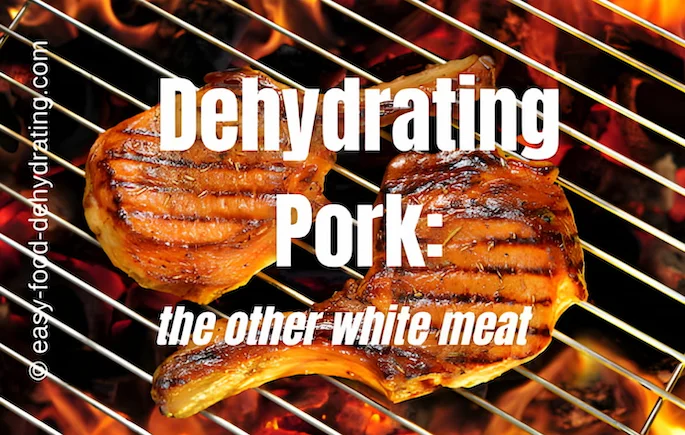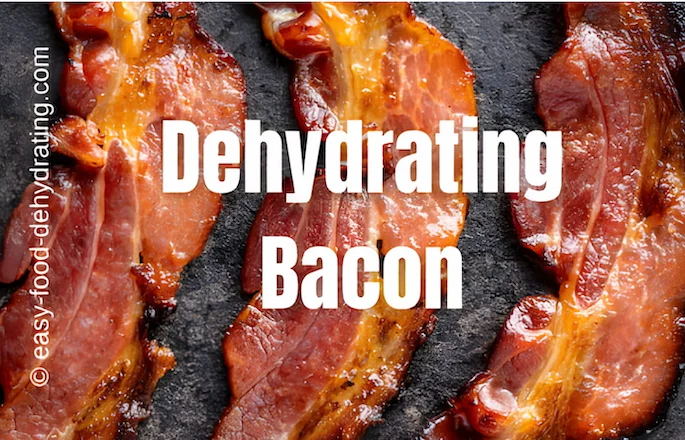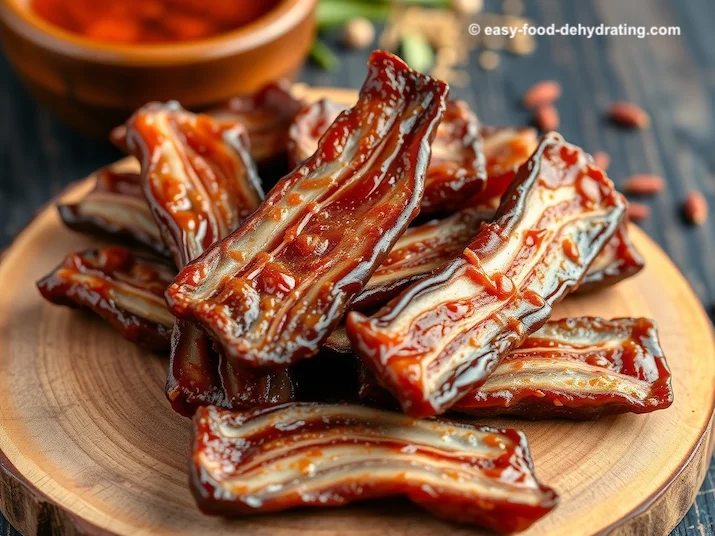- Home
- How to Dehydrate Cooked Pork (Safely & Deliciously!)
How to Dehydrate Pork the Right Way
(Safely & Deliciously!)

Susan Gast | Author and blogger at Bored Boomers, Beesville Books, A New Sober You and Easy Food Dehydrating
Want to make delicious, long-lasting dried pork? Whether you're prepping for camping, emergency food storage, or just a high-protein snack, dehydrating cooked pork is the best way to do it—safely!
🚨 Why Cooked Pork? Unlike some meats (like beef jerky), pork should NEVER be dehydrated raw. Cooking first eliminates harmful bacteria & parasites like Trichinella and Salmonella, ensuring your dried pork is safe to eat and store.
🔹 In this guide, I’ll show you how to dehydrate fully cooked pork—step by step!
Why You MUST Cook Pork Before Dehydrating
Why Raw Pork is Unsafe to Dehydrate
🚨 NEVER dehydrate raw pork!
Pork—unlike beef—can contain harmful bacteria & parasites that survive dehydration. Cooking first ensures safe, bacteria-free dried pork.
🔹 Why Cooking First is Essential:
✔ Kills bacteria & parasites before drying.
✔ Prevents foodborne illness (trichinosis, salmonella, etc.).
✔ Enhances flavor & texture.
✅ Safe Cooking Temperature: Pork must be cooked to an internal temperature of 145°F (63°C) before dehydration.

Best & Worst Cuts of Pork for Dehydrating
Not all pork cuts dehydrate well, so let's break it down:
🥩 Best cuts for Dehydration:
- Pork Tenderloin – Lean, tender, and easy to slice. Best choice!
- Pork Loin – Slightly firmer but still great for drying. Trim all fat!
- Pork Chops – Boneless, lean chops work well if sliced thin.
🥓 Pork Cuts That DON’T Work for Dehydrating:
- Pork Belly – High-fat content makes it prone to spoilage.
- Blade Chops & Shoulder – Too much marbling = bad for dehydration.
How to Prep Pork for Perfect Dehydration
Step 1: Cook the Pork to Kill Bacteria
- Choose a lean cut (tenderloin, loin, or trimmed chops).
- Cook using baking, boiling, grilling, or pan-searing.
- Ensure the internal temperature reaches 145°F (63°C).
- Let it cool completely before slicing.
Step 2: Slice It Thin for Fast & Even Drying
- Cut into 1/8 to 1/4 inch slices—thinner = faster drying!
- Slice against the grain for a tender texture.
- Trim any remaining fat to extend shelf life.
How to Season Pork for the Best Flavor
🌟 Should You Season Before or After Dehydrating?
- Before drying (deeper flavor infusion).
- After drying (stronger seasoning impact).
Tasty Seasoning Ideas:
🧂 Savory: Salt, black pepper, garlic powder, onion powder, smoked paprika.
🍯 Sweet: Brown sugar, cinnamon, nutmeg, a touch of maple syrup.
🔥 Spicy: Cayenne, chili flakes, hot sauce (for marinades).
🍯 The Best Marinade for Jerky-Style Pork
- ⅓ cup Worcestershire sauce
- ⅓ cup soy sauce
- ¼ cup brown sugar
- 2 tbsp chili paste
- 3 cloves garlic (crushed)
👉 Pat dry after marinating before placing in the dehydrator!
Step-by-Step: How to Dehydrate Pork Like a Pro
1. Preheat the Dehydrator
- Set to 145°F – 155°F (63°C – 68°C).
2. Arrange Pork Slices
- Lay pork in a single layer on trays (no overlapping!).
3. Dehydrate for 4–6 Hours
- Check periodically—pork should be dry & brittle, not moist.
4. Final Safety Step: Make Sure It's Fully Dried
- If unsure, place in a 275°F (135°C) oven for 10 minutes.
5. How to Store Dried Pork for Maximum Shelf Life
- Store in airtight vacuum-sealed bags in a cool, dry place.
Storage & Best Ways to Use Dehydrated Pork
✅ How Long Does Dehydrated Pork Last?
- Room Temp: 1–2 months (vacuum-sealed).
- Fridge: Up to 6 months.
- Freezer: 1+ year!
🥘 Ways to Use It:
- Add to soups, stews, and pasta (rehydrates in cooking!).
- Toss in scrambled eggs, stir-fries, or wraps.
- Eat as a protein-packed snack!
Can You Dehydrate Ground Pork?
Yes! Ground pork can be dehydrated, but it must be fully cooked and thoroughly drained of fat first. Fat does not dehydrate well and can cause spoilage.
How to Dehydrate Ground Pork:
- Cook the ground pork thoroughly, breaking it into small crumbles.
- Drain all excess fat by rinsing it with hot water or blotting with paper towels.
- Spread the crumbles in a thin, even layer on dehydrator trays.
- Dehydrate at 145°F – 155°F (63°C – 68°C) for 4–6 hours, checking for dryness.
- Once fully dried, store in an airtight container or vacuum-sealed bag.
Dehydrated ground pork is great for soups, stews, pasta, and backpacking meals. Just rehydrate with hot water or broth before use.
Can You Dehydrate Bacon? (Yes, But… Here's How)
YES! But it’s different from lean pork.

🥓 How to Dehydrate Cooked Bacon:
- Bake or pan-fry first to remove excess fat.
- Cut into strips & place on dehydrator trays.
- Set dehydrator to 145°F and dry for 4–6 hours.
- Store in an airtight container in the fridge.
💡 Tip: Use our Fahrenheit to Celsius converter here on our site!
FAQs: Everything You Need to Know About Dehydrating Pork
Can I Dehydrate Raw Pork?
Can I Dehydrate Raw Pork?
NO! Always cook pork before drying to kill bacteria & parasites.
What’s the Best Way to Rehydrate Dried Pork?
What’s the Best Way to Rehydrate Dried Pork?
- Soak in hot water, broth, or marinade for 15–30 minutes.
- Add directly to soups, stews, or sauces for instant rehydration.
How Long Does Dehydrated Pork Stay Good?
How Long Does Dehydrated Pork Stay Good?
- Vacuum-sealed at room temp: 1–2 months.
- Refrigerated: 6 months.
- Frozen: 1+ year.
Is Dehydrated Pork the Same as Pork Jerky?
Is Dehydrated Pork the Same as Pork Jerky?
No, dehydrated pork and pork jerky are not the same. Pork jerky is typically marinated, seasoned, and dried at a lower temperature to retain some chewiness. It still has some moisture, making it less shelf-stable unless stored properly. Dehydrated pork, on the other hand, is fully dried, with all moisture removed, making it better for long-term storage.
If you want a jerky-style texture, use a marinade and dry the pork at the lower end of the dehydrator temperature range (around 145°F/63°C), but note that it won’t last as long as fully dehydrated pork.
What’s the Best Dehydrator Temperature for Pork?
What’s the Best Dehydrator Temperature for Pork?
The best temperature for dehydrating pork is 145°F – 155°F (63°C – 68°C). This ensures that all moisture is removed while keeping the meat safe for storage.
🔹 Final Safety Step: If you’re unsure whether your pork is fully dehydrated, place it in an oven at 275°F (135°C) for 10 minutes after drying. This extra step ensures any remaining bacteria are eliminated.
Does Dehydrated Pork Need to Be Refrigerated?
Does Dehydrated Pork Need to Be Refrigerated?
It depends on how it's stored:
✅ Room Temperature: If vacuum-sealed and stored in a cool, dry place, dehydrated pork lasts 1–2 months at room temp. However, if the storage area is warm or humid, it may spoil faster.
✅ Refrigeration: Storing it in the fridge extends its shelf life to up to 6 months and provides extra protection against spoilage.
✅ Freezing: If you want maximum shelf life, keep dehydrated pork in the freezer. Properly sealed, it can last 1+ year with no significant loss in quality.
For the longest-lasting results, always vacuum-seal and store in airtight containers.
Get Your Free Guide to Dehydrating Food!
Don't forget to grab your free Six Simple Steps eBook! It’s packed with tips for dehydrating everything from fruits and veggies to dog treats. Get it here.
Before You Go...
If you like the content, please give me some love by clicking on the 🩷 in the lower right hand corner (on just about all my pages). This signals to me that you find it enjoyable and useful. Thank you so much!

















